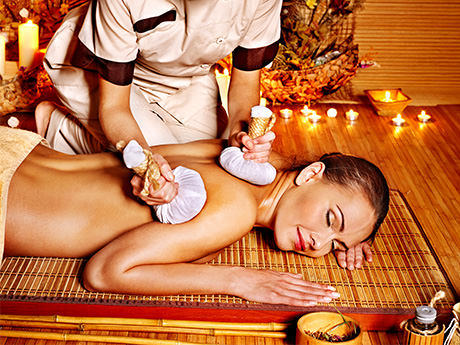Introduction
Thai massage – or “Nuat Thai” in the local language – is one of the world’s most popular and effective massages, namely because it is heavily influenced by several different practices throughout Asia. Believed to have originated in India 2,500 years ago, its Ayurvedic origins were joined by traditional Chinese medicine as the practice worked its way down to Thailand where it was then practiced by Buddhist monks. In fact, the Thai massage energy points and channels of the body known as “Sen” are very similar to the “Qi” – the underlying prin- ciple in traditional Chinese medicine, acupuncture and even martial arts.
Background
The modern Thai massage prac- tice follows the belief that the body is permeated with “lom”, or “air”, which enters the body through the lungs and travels along the body’s 72,000 sen, which are then manipulated via massage to increase the energy flow along these lines.
Unlike the modern practice, the traditional massage style follows the understanding of the human body as possessing five layers – the skin, tissue, channels, bones and organs – to influence the relationship of the four body elements; fire, earth, wind and water.
Main Types of Thai Massage
Chalosiak (Common)
This is the most common Thai massage, originated in Wat Pho, the famous school and birthplace of traditional Thai massage. It involves the use of hands, feet, knees and elbows to relieve overall muscle strain and tightness, tension as well as stimulate blood and energy flow throughout the body.
Ruesri Dat Ton
Also called the “Contorted Hermit”, this yogic practice involves breathing techniques and the stretching, bending and twisting of different body parts. It opens up blood circulation, increases flexibility and strengthens and relaxes the body.
Tok Sen Lanna
More specific to northern Thailand, this technique involves herbal oils followed by tapping muscles and pressure points with a small gavel made out of wood. This stimulates the body via vibration at the pressure points, helping to clear out negative energy, ease muscular tension and promote overall physical and mental relaxation.
Hot Herbal Compress
This combines traditional Thai massage with application of herbs and essential oils tightly bound in cloth, and believed to possess healing power in its natural ingredients. This very soothing physical massage also has powerful sensual/aromatic properties for a full therapeutic experience.
Foot Massage
Involving the use of hands, fingers and a wooden “foot stick”, this massage involves applying pressure to specific parts of the foot which are believed to be linked to other parts of the body, particularly the organs. This practice is designed to stimulate the entire body via reflex points in the feet.
Rajasamnak (Royal)
Originally reserved for members of the Thai royal family, this massage uses only the hands and fingers to apply pressure along the body’s energy lines, as a form of regular treatment purposes rather than relaxation.
Yu Fai
There is even a specific massage designed for new mothers. Called “Yu Fai” – or “staying in the heat” – this massage technique is intended to “heal” new mothers as their hormonal balance and body have been altered drastically over the pregnancy and birth. Using oils, compresses, and herb-infused baths, this helps new mothers feel stronger, radiant, and improves blood circulation and physical/mental harmony.
Note: This is post-partum treatment and not intended for those who are pregnant.
Coriander also has numerous medicinal uses as it is composed of many antioxidants and antibacterial properties. An equally popular use for coriander in India is to boil seeds for diuretic effects.
Additional Information
Unlike other practices, for some massages you will be treated fully dressed and sometimes on the floor. A full session can average from one to two hours long.
Health Benefits
The health benefits of Thai massages are not only incredibly relaxing, but also improves bloodflow,flexibility,energy and stress reduction.
It also can be a medical treatment for those with irritable-bowel syndrome, constipation, headaches, sciatica and back/neck pain, as well as asthma, migranes, sprains and anxiety.
Important to Know
Thai massages are not recommended for people with infectious skin disease, recent surgery, chemo and radiation therapy, or those prone to blood clotting, pregnant or have inflamed injuries.
Where To Get a Thai Massage
To ensure that you receive an authentic Thai massage, find a spa that employs professionally trained and licensed technicians, or go to one of the many massage schools in Bangkok, Chiang Mai or any big urban center.

